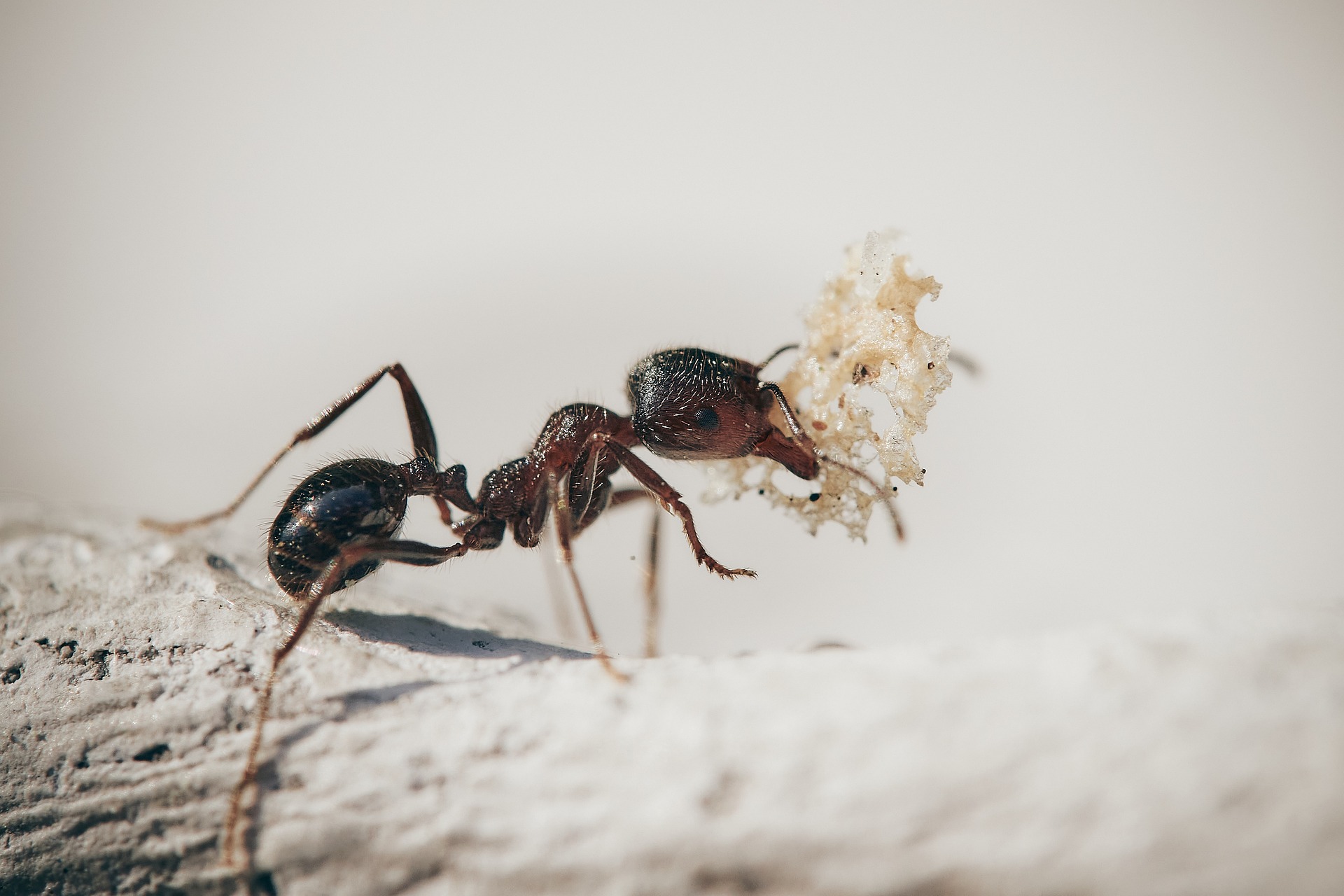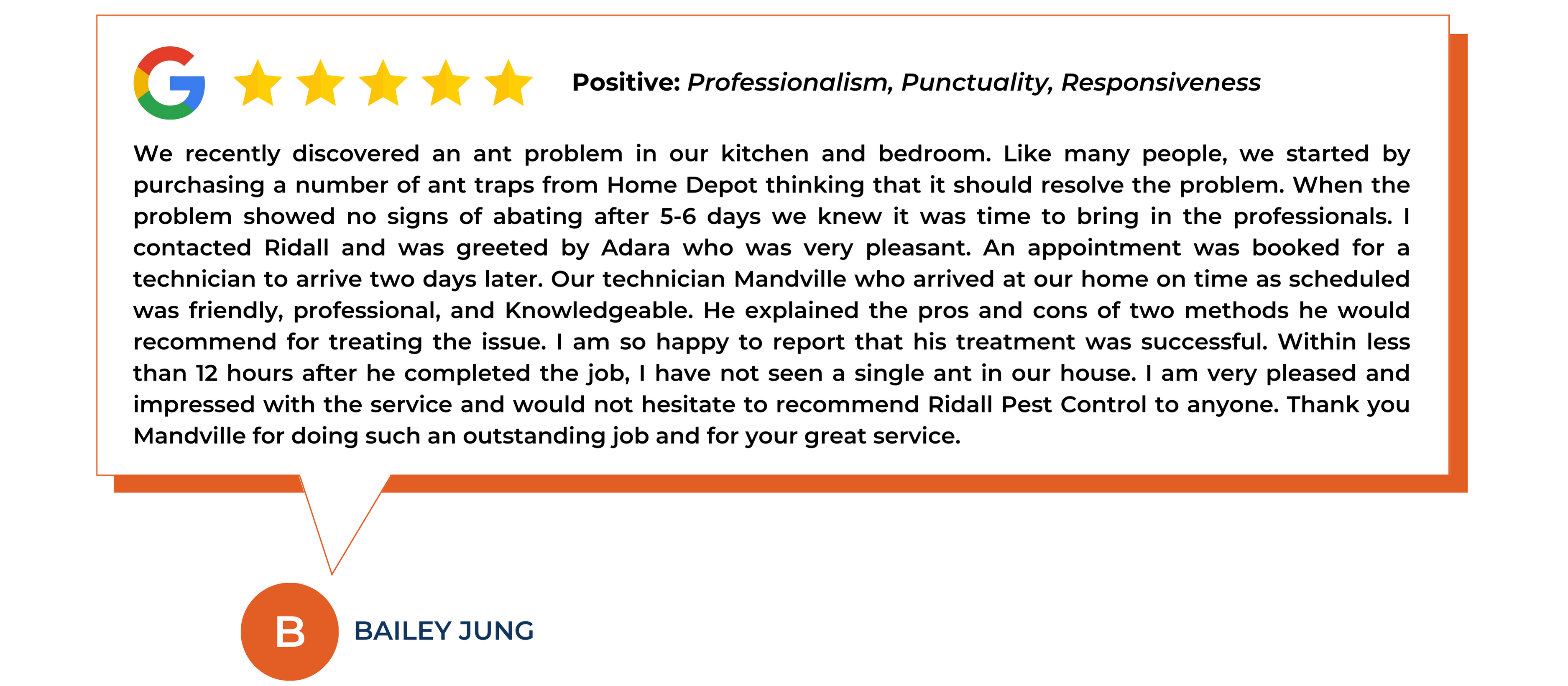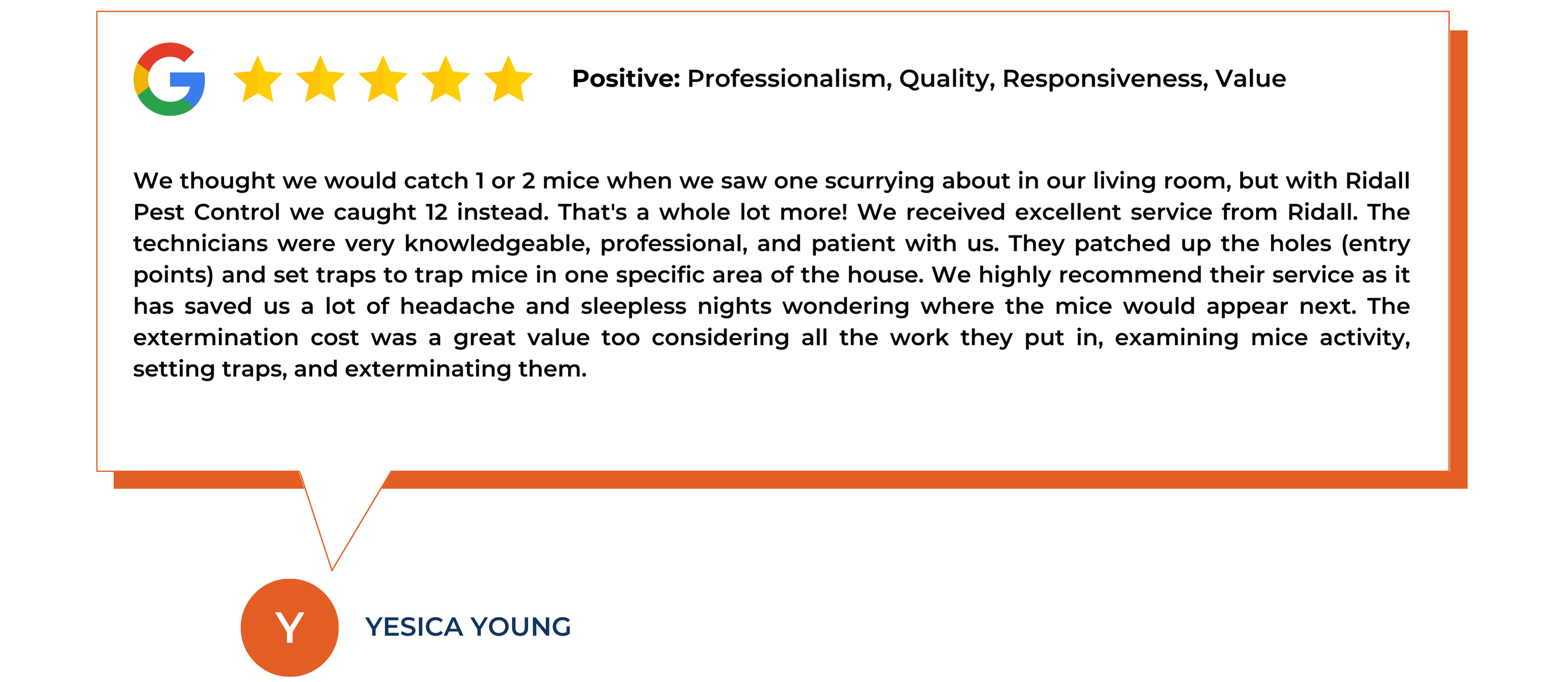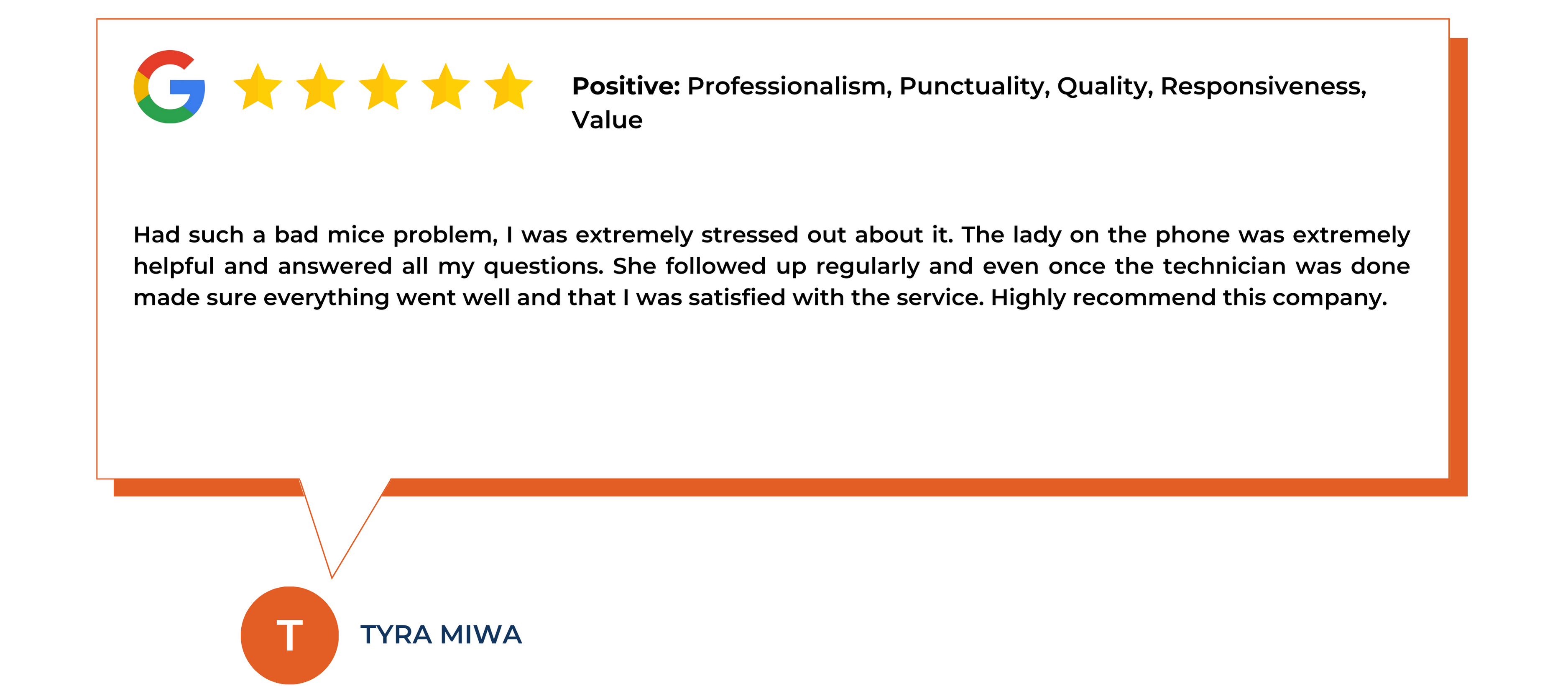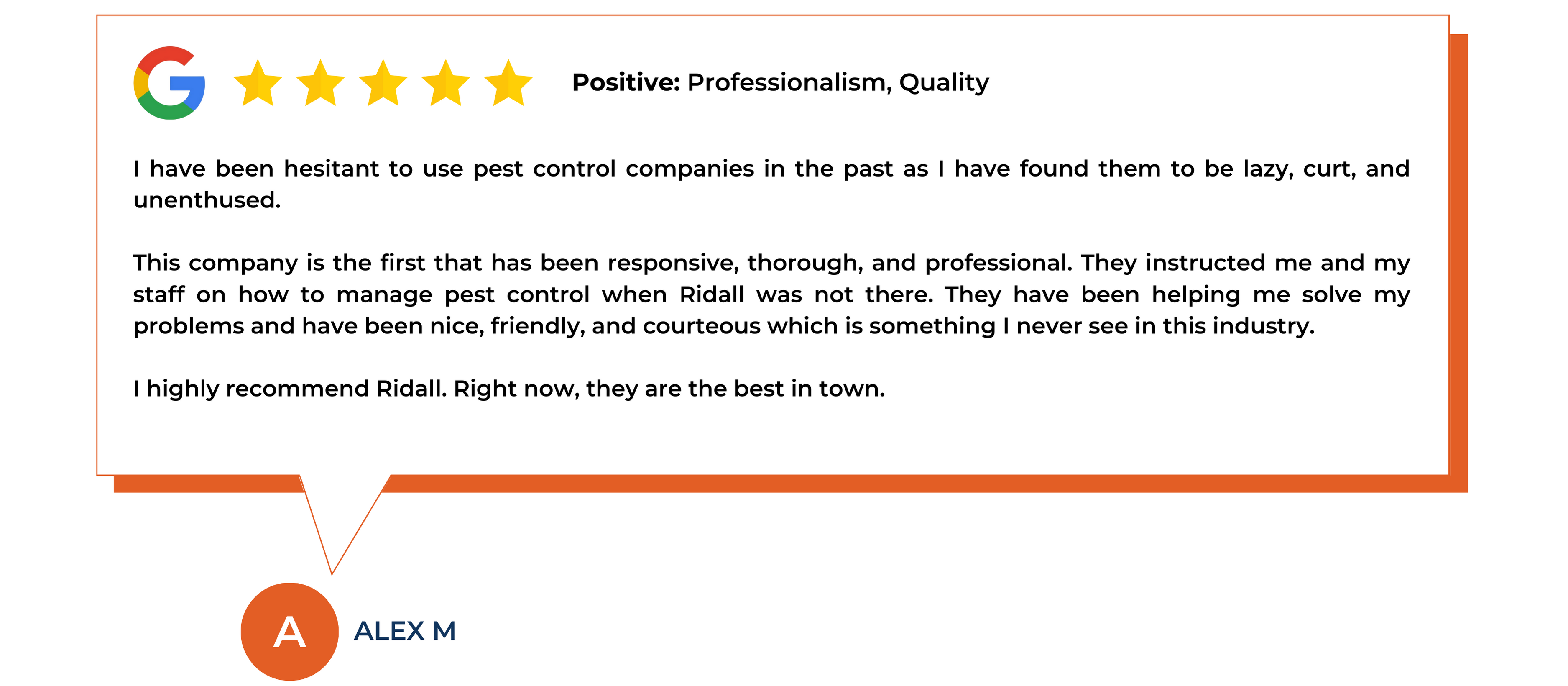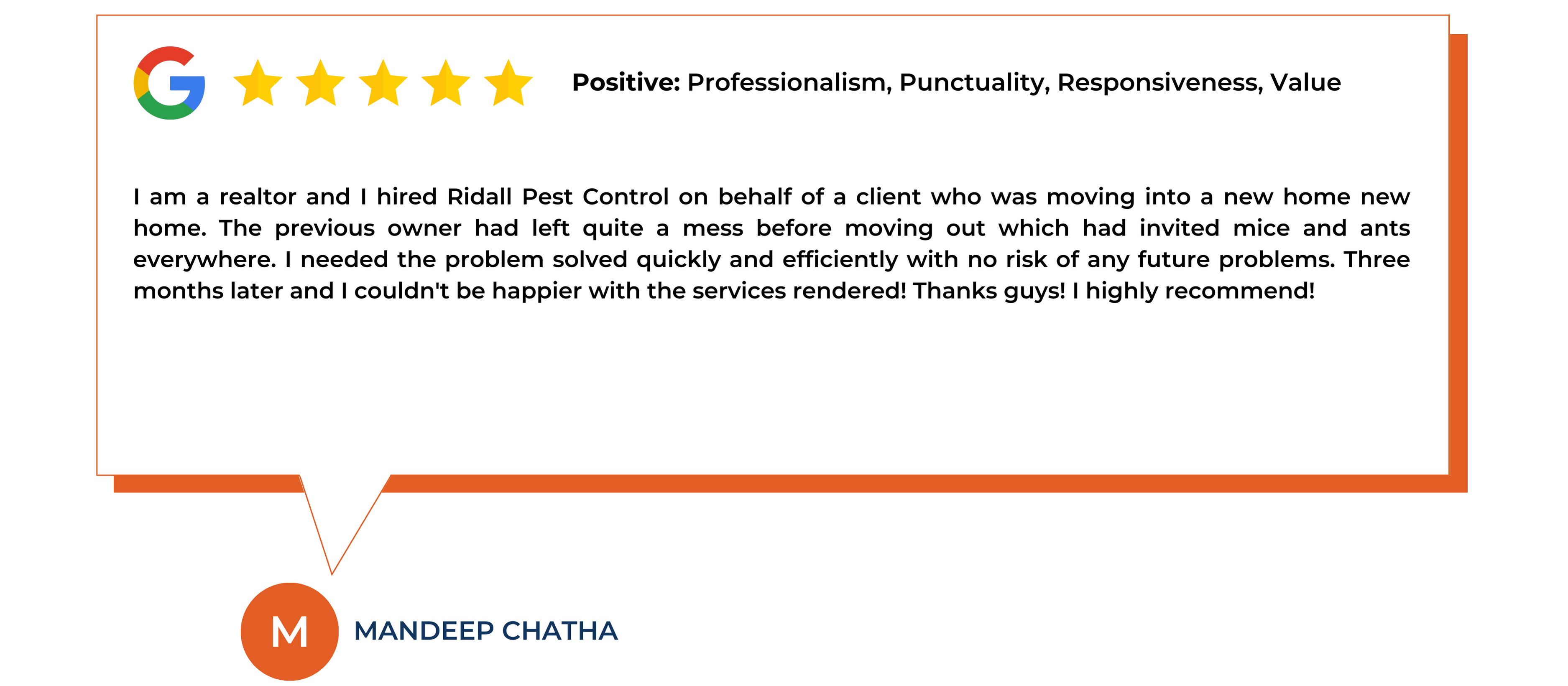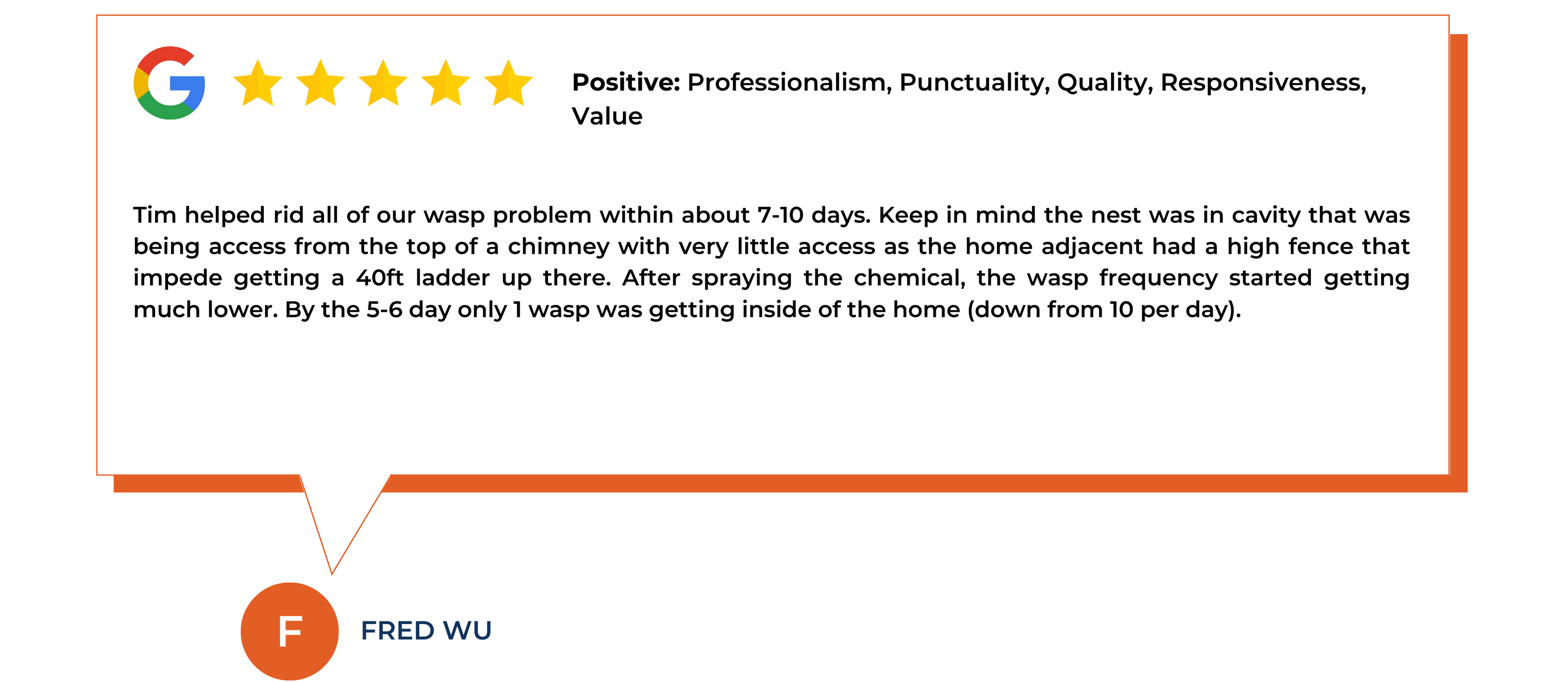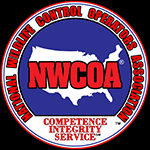Dealing With Ants: Understanding The Threat And Effective Pest Control Solutions
Ants are persistent pests that infest our houses and gardens in search of food and refuge. Proper Ridall Pest Control company management procedures are required to get rid of an ant infestation and prevent further invasions.
The purpose of this article is to provide useful information on ant characteristics, behaviour, potential health risk and property damage, and effective prevention strategies. We may effectively manage ant infestations and establish an ant-free environment by executing appropriate control methods.
We work daily from 8 am to 8 pm, with 24/7 website support.
Our services include same-day emergency response, professional equipment, effective pest removal strategies, and a strong commitment to the environment with eco-friendly practices prioritization.
Our technical team is all certified with structural IPM (Integrated Pest Management) certificates, Quality Pro Canada and WHMIS.
Ant Characteristics
Ants are social insects in the Formicidae family. They may be found all over the world and are known for their incredible adaptability and well-organized colonies. Here’s some general information about ants:
1. Physical Appearance
Ants range in size from a few centimetres to more than an inch. They have separate bodily sections like the head, thorax, and abdomen. Their bodies are segmented and often encased with a strong exoskeleton.
2. Habitats
Ants build nests in a variety of places, including underground, in tree cavities, under rocks, and within constructions. The nesting habits of different ant species vary. Some ants like constructing complicated nests with chambers and tunnels, while others prefer simple nests.
3. Reproduction
Ants reproduce by mating flights, in which winged males and females mate in the air. Females drop their wings after mating and form new colonies. The mated queen locates a nesting place, lays eggs, and the colony expands as the eggs hatch into larvae and develop into adult ants.
4. Behaviour And Social Structure
Ants live in enormous colonies that can number in the thousands or millions. They have a complex social organization that includes workers, soldiers, and reproductive individuals (queens and males). Within the colony, each caste has specific roles and duties.
5. Diet
Ants are omnivores, which means they eat a variety of foods. Plant materials, nectar, fruits, seeds, insects, and even other small animals are all part of their diet. Some ant species have specialized diets, such as fungus-growing ants, which grow fungi as their principal source of food.
6. Communication
Ants interact via a variety of methods, including chemical messages known as pheromones. Pheromones enable ants to trace each other, recognize colony members, and communicate information about food supplies and potential threats.
Typical Ants Species
Vancouver’s most prevalent ant species are Carpenter ants, Odorous house ants, and Pavement ants. These ants are common in residential and commercial areas and can cause a variety of problems if their populations are not controlled.
The following are the primary distinctions between the common ant species in Vancouver:
- Carpenter Ants (Camponotus spp.) are larger than other ant species. They are well-known for their capacity to tunnel into wood and cause structural damage to property. They are typically black in colour, with a single node connecting their thorax and abdomen.
- Odorous House Ants (Tapinoma sessile) are little, dark-coloured ants that make a strong, unpleasant fragrance when crushed. They are frequently found in kitchens and bathrooms, where they are attracted to sugary or oily food sources. They have several nodes on their bodies and do not cause structural damage.
- Pavement Ants (Tetramorium caespitum) are tiny, dark brown to black ants that live in cracks in pavement, sidewalks, and driveways. They are known for building tiny mounds of displaced soil around the entrances of their nests. They eat various food sources, including insects, oily foods, and sweet substances.
While all three species can cause problems when they infiltrate homes or structures, their specific activities, nesting habits, and dietary preferences differ. Identification is critical for effective ant control and selecting the best treatment approaches.
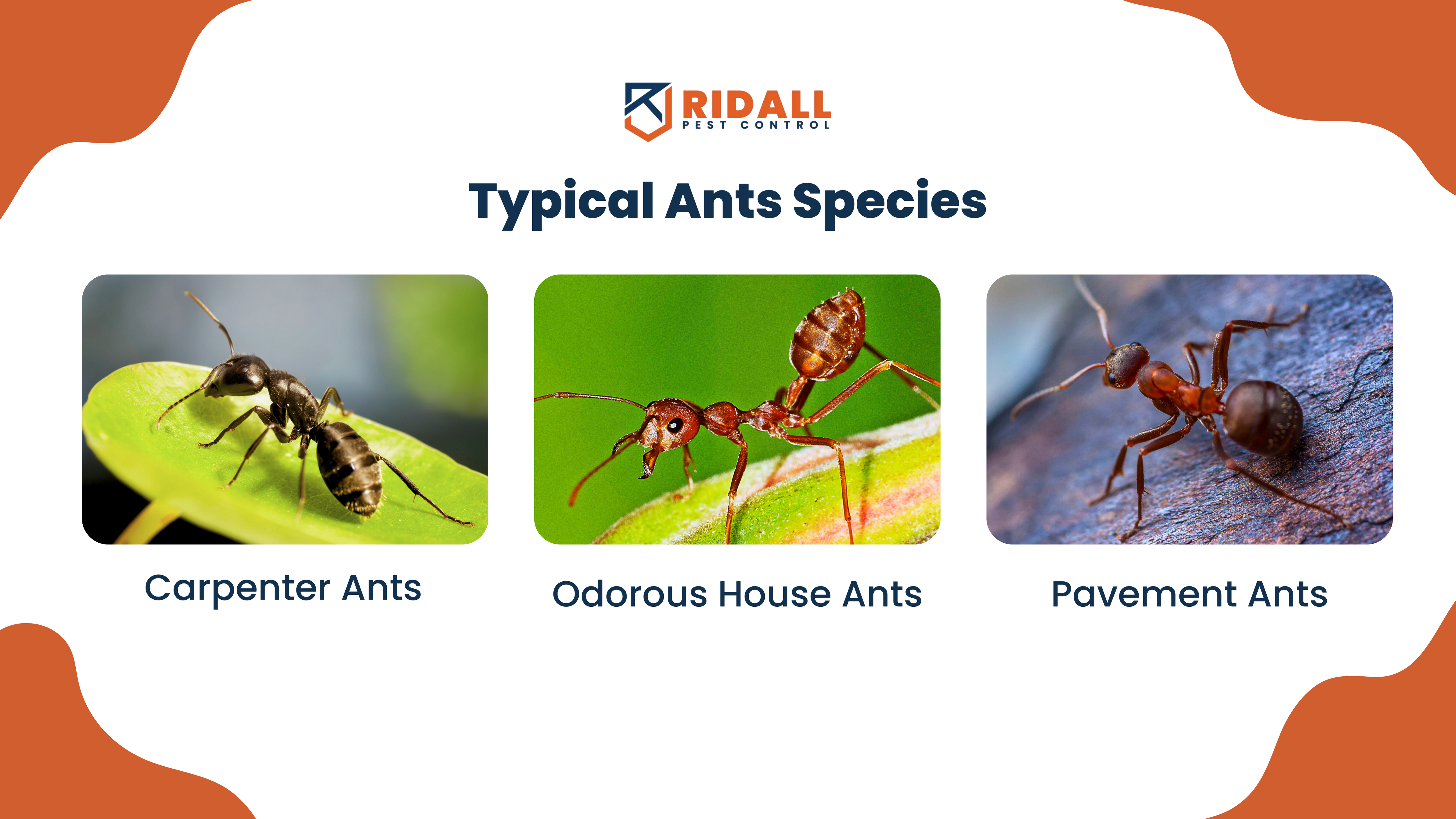
Risks And Dangers Of Ant Infestation
An ant infestation can pose some threats and concerns to your home as well as your health. The following are some of the most common dangers linked with ant infestations:
Health Risks
Ant infestations can pose several health hazards to humans. Here are some more in detail concerning the health hazards related to ants:
1. Allergic Reactions
Certain people are allergic to ant bites and stings. Symptoms may include swelling, redness, itching, and, in severe cases, anaphylaxis, a life-threatening allergic reaction that necessitates emergency medical intervention.
2. Disease Transmission
While ants are not known to directly transmit diseases to humans, they can contaminate food and surfaces with bacteria and pathogens they pick up while foraging. If contaminated food is consumed, this can result in foodborne diseases.
3. Asthma and Respiratory Issues
Infestations of ants may worsen respiratory diseases such as asthma. Ants and their droppings can cause allergic responses and asthma symptoms in sensitive people, causing breathing difficulty and discomfort.
4. Skin Infections
Scratching ant bites can break the skin, increasing the risk of infections. Bacteria from the ants’ mouthparts can enter the skin and cause disease, requiring treatment.
5. Psychological Impact
Infestations of ants may cause stress, anxiety, and frustration. Living with ants infestation and having to deal with ants all the time can have a detrimental effect on your mental health and overall quality of life.
Property Damage
Ant infestations can cause a variety of property damage. More information on the potential property damage caused by ants can be found below:
1. Structural Damage
Carpenter ants, for example, can cause structural damage to buildings. These ants dig tunnels in wooden constructions, threatening their structural stability over time. Untreated infestations can weaken wood beams, floors, and other structural elements, leading to costly repairs.
2. Electrical Damage
Some ants are attracted to electrical wirings and may nibble on the insulation, causing wires damage. Short circuits, electrical malfunctions, and even fire hazards can result from this behaviour. If you detect ants near electrical outlets or wiring, it’s critical to handle the problem promptly to avoid potentially higher costly property damage.
3. Garden And Landscape Damage
Certain ant species can cause harm to plants and gardens. They build enormous mounds that can damage plant root systems, causing them to degrade or die. These ants can also attack and sting people, pets, and livestock, resulting in painful reactions and potentially major health problems.
4. Contamination
Ants have been observed contaminating food and food preparation surfaces. They can get access to and infest pantries, cupboards, and other food storage facilities, resulting in food spoilage and waste. Ants generate pheromone trails that attract more ants to the food source, worsening the infestation and raising the risk of contamination.
5. Aesthetic Damage
Ant trails and nests can be unsightly, especially if visible on your property. Ants, whether indoors or outdoors, can have a severe impact on the overall appearance of your home or business.
Identifying Ant Infestation Signs
Early detection of an ant infestation is critical for effective pest control. Here are some frequent warning indicators to check for:
- Pheromone Trails: Ants communicate by leaving smell trails to guide other ants to food sources. These traces may appear on surfaces as faint lines or smears, particularly along walls or baseboards.
- Nesting Sites: Ants build their nests in a variety of locations. Look for nests, which can appear as little mounds of soil or debris outside or in hidden spots such as wall voids, crawlspaces, or under flooring inside.
- Frass or Debris: Certain ant species build frass or debris piles around their nesting places. This can include wood shavings, soil particles, and other materials excavated by ants as they develop and extend their nests.
- Damage to Wood: Carpenter ants, for example, excavate wood to build their nests. Small holes or tunnels in wooden structures, furniture, or window frames are signs of wood damage.
- Presence of Ant Wings: During mating seasons, swarmers, or winged reproductive ants, are common. The presence of ant wings near windowsills, light fixtures, or other spots suggests the existence of an ant colony nearby.
- Food Contamination: Ants near food sources, such as sugar bowls, crumbs, or spills, indicate an infestation. Ants leave pheromones behind that attract more ants to the area, increasing activity.
If you notice any of these symptoms, it is best to contact a professional Ridall Pest Control company to assess the amount of the infestation and execute proper treatment procedures. Early diagnosis and intervention can help prevent future ant problems and reduce potential health or property damage.
How Exactly Do We Get Rid Of Ants?
Ridall Pest Control company employs several steps to remove ants from your property effectively. Here is the process of our extermination of ants:
It’s important to remember that the particular processes and tactics employed will differ depending on the infestation’s unique circumstances. Ridall Pest Control company ant exterminators have the experience and expertise to manage ant infestations effectively and ensure long-term control.
Facts About Ants
Ants are social insects that live in well-organized colonies. Each colony comprises several castes, such as workers, soldiers, and the queen. They communicate and collaborate to complete tasks and preserve the colony’s existence.
Ants are extraordinarily strong despite their small size. They can carry items that are many times their body weight. This strength comes from their muscle structure, which enables them to perform incredible feats of lifting and transporting.
Ants interact with one another via a variety of methods, including chemical messages known as pheromones. They employ pheromones to leave smell trails, mark territory, and communicate with other colony members.
Some ant species engage in farming and herding practices. They grow fungus for food, and others “milk” aphids for their sugary secretions. These interesting behaviours show how ants may manage and control other organisms.
Both male and female ants take to the air during the nuptial flight, which is the mating phase of ants. Male ants die after mating, and female ants shed their wings and start new colonies as queens. This unique reproductive method enables ants to colonize new places and extend their populations.
FAQ (Frequently Asked Questions)
1. How do ants find their way into homes?
Ants enter buildings via smell trails, cracks, gaps, and openings in walls, windows, doors, and foundations. They are attracted to food and use their sense of smell to locate it. Ant infestations can be avoided by preventing entrance points and maintaining cleanliness.
2. How can I prevent ants from entering my home?
Keep your kitchen and surrounding spaces clean, food in airtight containers, cracks and openings sealed, and moisture sources eliminated. Clean up spills and crumbs regularly to eliminate potential food sources.
3. Are ants harmful to humans?
Although most ants are not dangerous to people, they can contaminate food and be a nuisance. Some species can sting and cause discomfort or allergic reactions in sensitive people.
4. How long do ants live?
Ant lifespan varies according to species and caste. Worker ants typically survive for a few months, although queens might live for years, even decades.
5. Can I get rid of ants on my own?
Ridall Pest Control company recommends consulting ants infestation with our ant exterminator for effective and long-lasting eradication. Our ant exterminators are highly trained professionals who bring unmatched knowledge and skills to tackle ants control.
6. Can ants cause structural damage to buildings?
The majority of ant species do not cause structural harm. Certain species, such as carpenter ants, can burrow through wood, potentially damaging the stability of wooden structures.
7. How long does it take to eliminate an ant infestation?
The length of time it takes to eradicate an ant infestation varies based on the intensity of the infestation, the ant species involved, and the control methods used. To guarantee successful and long-lasting effects, you need following the recommended treatment plan tailored by a professional Ridall Pest Control company is essential.
Say goodbye to unwanted guests!
Our professional Ridall Pest Control services are here to ensure a pest-free environment for you and your loved ones. Trust our experienced team and ant exterminators to provide effective, safe, environmentally friendly pest control solutions for an ant-free home.

